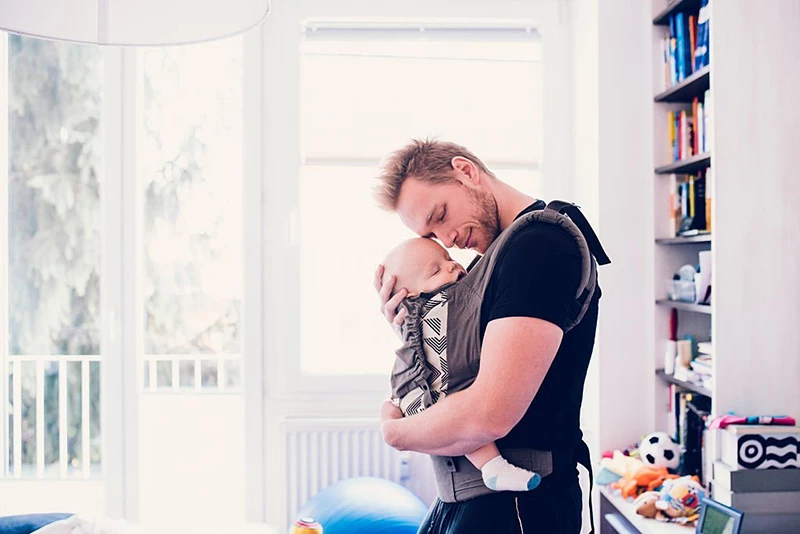Baby carriers have become increasingly popular for parents who wish to keep their little ones close while going about their daily activities. These handy devices allow parents to hold their babies close to their chests or on their backs while simultaneously freeing up their hands. However, questions have been raised about whether or not these baby carriers are bad for posture. In this blog post, we’ll explore the relationship between baby carriers and posture, and offer guidelines to ensure both parents and babies are safe and comfortable.
The Effects of Baby Carriers on Posture
The effects of baby carriers on posture can vary significantly based on the type of carrier used, the way it’s worn, the duration of use, and individual factors like age, height, and body shape. Properly used baby carriers are designed to support the weight of your child ergonomically and distribute it evenly across your body, which can help maintain good posture.
However, poor usage, ill-fitting carriers or poor quality carriers can lead to posture issues, discomfort, or even pain over time. Let’s examine some common factors that can lead to bad posture when using baby carriers and how to avoid them.
Carrier Type
There are various types of baby carriers available in the market, such as baby wraps, slings, soft-structured carriers, and frame backpacks. Each of these has different levels of support and features, and not all carriers are suitable for all ages and weights. For instance, a soft, stretchy wrap may be extremely comfortable for a newborn but may not be supportive enough for a toddler. Therefore, it’s essential to research and choose a carrier that suits your baby’s age, size, and weight.
Positioning
An ergonomically designed carrier should allow you to maintain a neutral spine, with your shoulders back and your chest open. Some carriers, like those promoting the “M-position,” also known as knees above hips, provide optimal support for your baby while reducing strain on your back. Moreover, the optimal position for your baby is upright, with her legs flexed around your body and her head close enough to kiss.
Duration of Use
Like any activity or muscle exertion, babywearing can cause fatigue when done for extended periods. While many carriers allow for prolonged use, it’s essential to listen to your body’s comfort level and take breaks. If you start to feel discomfort, use that as a signal to change position, switch to another carrying method, or rest.
The Importance of Good Posture
Maintaining good posture not only helps you look and feel more confident, it also helps prevent back pain and injury. Proper posture ensures that your bones and muscles are aligned, reducing strain on your back and shoulders. As you carry a baby, extra weight can cause stress on your lower back, making good posture even more important.
Tips for Maintaining Proper Posture with Baby Carriers
To ensure that your baby carrier does not negatively affect your posture, follow these tips:
- Select a carrier with excellent lumbar support. Many high-quality carriers are equipped with built-in lumbar support that helps maintain the natural curvature of your lower back.
- Adjust the straps properly. Shoulder straps should be tightened enough to keep your baby close without causing discomfort, while waist and chest straps should distribute weight evenly to avoid strain on specific areas.
- Switch positions regularly. Rotate between carrying your baby on the front, back, or hip, since each position distributes weight differently.
- Engage in regular physical activity. Strengthening your core and back muscles can help counterbalance any posture issues that may arise due to babywearing.
By adhering to the above-mentioned guidelines, you can enjoy the many benefits of babywearing without compromising your or your baby’s posture. With a quality carrier and proper use, you can be sure that both parent and child are safe, secure, and comfortable. Happy carrying!


